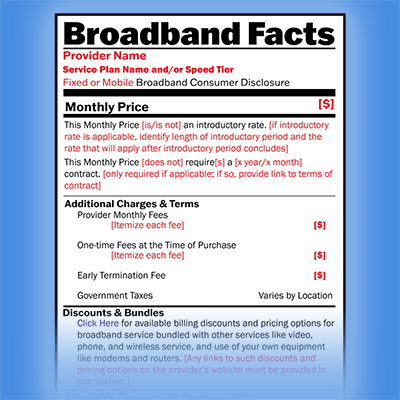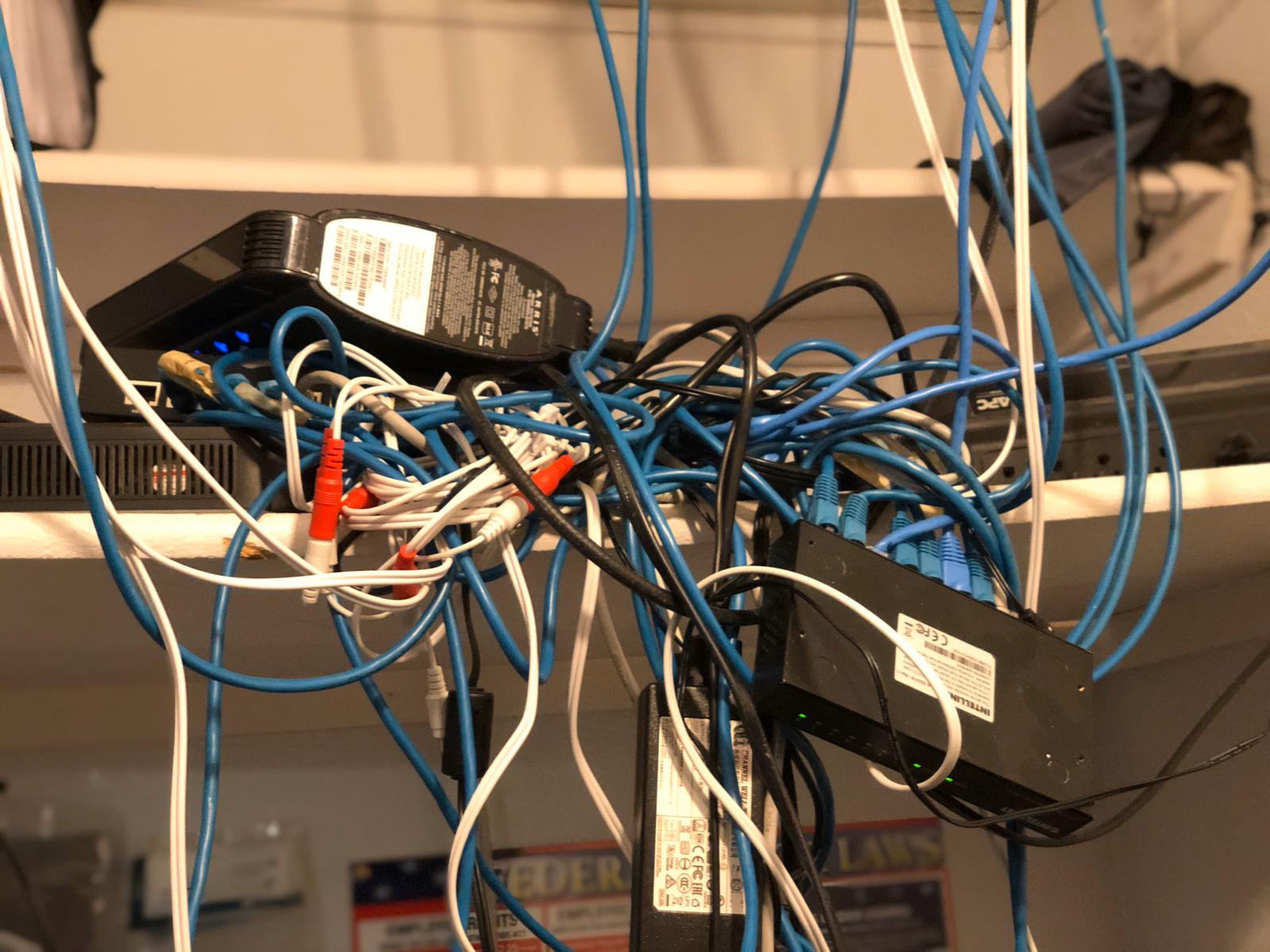Internet Providers: FCC Demands Transparency on Fees & Pricing
Greater transparency mandated for internet providers to disclose fees, prices by FCC. Empowering consumers with upfront information.

Internet Providers: FCC Demands Transparency on Fees & Pricing
You've just settled into the couch for an evening of streaming. Suddenly, your screen buffers endlessly.
Shopping for Internet services is often fraught with hidden fees that result in higher-than-expected monthly bills. Unexpected costs can strain budgets and lead to dissatisfaction with service providers.
The Federal Communications Commission has stepped in, mandating greater transparency from Internet providers. This pivot toward openness aims to empower consumers with precise, upfront information on service fees—shedding light on the real costs before contracts are signed.
No more surprise fees.
President biden tweeted about this, check it out below:
FCC's Transparency Initiative
In an age where digital connectivity is indispensable, the Federal Communications Commission (FCC) is enforcing a new policy that bolsters clarity and honesty in broadband service advertising. With the FCC's latest mandate, providers must now explicitly reveal the full monthly service cost, including any additional fees that could impact your budget. This regulatory advancement ensures customers are not blindsided by covert charges, thereby fostering trust and greater satisfaction.
The move towards transparent pricing also includes a breakdown of one-time charges, like installation or equipment fees, which are often overlooked during the decision-making process
Revealing Hidden Fees
Internet providers are now required—firmly and rightfully—to disclose all fees and pricing more comprehensively and clearly.
Hidden costs in broadband services are becoming a thing of the past, thanks to the FCC's reinforced transparency rules.
When scrutinizing potential service providers, customers typically seek plans that offer both economic and performance value. With the FCC's intervention, these considerations can now be based on fully transparent information, illuminating the once obscure costs associated with setup, equipment, or additional services.
Understanding the exact cost of internet and cable TV services has become considerably more straightforward. The FCC's push for transparency mandates that all associated fees—listed conspicuously and comprehensively—help consumers make more informed decisions by highlighting the true price of connectivity.
What is transparent billing?
Transparent billing is a practice where all service charges are clearly outlined, leaving no room for surprises.
For individuals searching for high speed internet and cable TV deals in their area, transparent billing means that all service charges are clearly outlined, ensuring there are no unexpected surprises.
Providers are now compelled to detail all costs—fixed, variable, and one-time fees alike—so consumers have a clear picture of their financial commitment from day one.
This move to demystify billing practices aims to eliminate the frustrating uncertainty that consumers often face when discerning the true cost of their internet and cable TV services. By mandating that providers explicitly break down each charge, the FCC safeguards consumer interests, ensuring they are not blindsided by hidden fees, which can range from taxes, regulatory surcharges to equipment rental costs.
Consumer Benefits
In the wake of the FCC's transparency requirements, consumers are positioned to reap significant advantages. Empowered with detailed billing information, they can now compare offerings with unprecedented clarity, making decisions based on the actual value rather than attractive promotional rates that obscure the full picture. This heightened understanding levels the playing field, giving consumers the leverage to negotiate better deals or switch providers without fearing the sting of unforeseen charges. Overall, this policy shift prioritizes consumer welfare in the digital age, ensuring that individuals can subscribe to internet and cable TV services with confidence and peace of mind.
Easier Price Comparisons
With new FCC transparency rules, assessing internet and TV service costs becomes much more straightforward.
- Base Service Price: Understand the core cost of your package.
- Additional Service Fees: Identify charges for added features or services.
- Equipment Fees: Discern what you're paying for modems, routers, or set-top boxes.
- Promotional Discounts: Quantify savings and their duration to gauge long-term costs.
- Taxes and Governmental Fees: Prepare for mandatory charges that vary by location.
Comparison shopping for services now hinges on full pricing visibility.
Thoroughly scrutinizing breakdowns, consumers can align their choices with budgetary constraints and preferences.
Protection from Unexpected Charges
Understanding the full cost of your internet and cable TV service is now more transparent, thanks to new FCC regulations.
- Upfront Pricing: Guaranteed knowledge of the total monthly bill before signing up.
- No Hidden Fees: Service providers must disclose all additional fees outside of the advertised price.
- Clear Terms of Service: Details regarding service limitations and contractual obligations are clarified.
- Advance Notice of Price Changes: Providers are required to inform customers of pricing adjustments with ample time.
- Easy-to-Understand Bills: Itemized statements that clearly separate service charges, equipment fees, and other costs.
These provisions ensure you'll no longer be blindsided by unexpected fees or opaque billing practices.
Make informed decisions about your internet and cable TV subscriptions with newfound assurances due to enforced transparency.
Impact on Internet Providers
The FCC's mandate for enhanced transparency represents a significant shift for internet providers, necessitating a comprehensive review of their pricing strategies and marketing materials. This movement towards openness obliges providers to meticulously itemize and disclose fees up front, propelling a wave of competitiveness that prioritizes clarity and customer empowerment. As a result, you as a customer benefit from the ability to compare service costs with greater precision, potentially driving providers to offer more favorable terms in order to remain compelling options in a market that's now shining a spotlight on clear and fair pricing.
Adjusting Advertising Strategies
With the latest FCC directives, providers must overhaul their marketing lexicon to focus on transparency over enticement. It's no longer just about the appeal of high speeds and expansive channel lineups; the conversation is now equally about straightforward pricing and fee structures.
In a strategic response, savvy marketers are crafting campaigns that champion their compliance with these new transparency standards. This introduces a refreshing layer of trust to promotional content, as they pledge to present the full picture of costs associated with their service offerings.
Embracing this regulatory change, providers are shifting from the allure of low introductory pricing to the reassurance of no hidden fees. This strategic pivot restructures advertising narratives to highlight long-term customer satisfaction over short-term sign-ups, fostering a new ethos in the industry.
Thoughtful communication is imperative to navigate the nuances of this revamped approach. Providers that can effectively translate the complex web of taxes, fees, and surcharges into clear, digestible content stand to win consumer confidence. It’s about connecting the dots for customers in ways they resonate with.
As industry marketing recalibrates, expect to see a surge in messaging centered around honesty and simplicity. In this era, the most straightforward provider becomes a consumer's ally, delivering peace of mind alongside cable and internet services.
Compliance Challenges
New regulations bring arduous tasks.
For internet service providers (ISPs), these mandated transparency requirements pose as a double-edged sword. They provide a framework that promotes fairness and clear communication, establishing trust in their relationships with customers. However, adhering to these mandates often requires overhauling existing billing systems, which can be a costly and complex process rife with operational challenges. Moreover, the path to compliance may be littered with unforeseen technical difficulties that can stymie efforts to achieve full transparency.
Information overload can confuse consumers.
Ensuring compliance is an ongoing responsibility.
Long-standing practices must be meticulously reevaluated. Service providers are now - if they weren't already deeply engaged - dissecting their pricing and billing structures to not just meet, but hopefully exceed, the baseline expectations set out by the new guidelines. This is a continuous process, where adherence requires consistent monitoring and evaluation of internal processes, particularly as the industry evolves and new offerings or pricing models emerge. The target: full compliance by mid-year 2023, after which providers who fall short could face penalties. This quest for greater transparency not only necessitates internal audits but may also involve a strategic overhaul to align every aspect of the business with these enhanced consumer protection benchmarks.
Future of Broadband Pricing
The landscape of broadband pricing is on the cusp of becoming more consumer-focused, as internet providers adapt to new regulations mandating clearer disclosure of fees and rates. Soon, consumers can expect to see less of the convoluted fine print and more straightforward billing, allowing them to make well-informed decisions based on the actual cost of services without the surprise of hidden fees. This shift in transparency isn't just a fleeting adjustment; it's a significant move towards fostering a more trust-based relationship between providers and customers, ultimately resulting in a more competitive and fair market that benefits everyone.
Predicting Market Shifts
Anticipating trends in broadband pricing requires keen analysis and forward-thinking strategies.
- Market Analysis: Providers must evaluate current customer behavior and satisfaction levels.
- Regulatory Response: New policies will directly influence pricing structures, requiring providers to adapt.
- Competitive Positioning: Companies will adjust their packages and rates to stay relevant and attractive to consumers.
- Technological Advancements: Emerging technologies can shift demand, impacting pricing and service offerings.
- Consumer Advocacy: Greater transparency could empower consumers, driving demand for fair-pricing practices.
This shift is likely to sculpt the future telecom landscape.
Service providers navigating this change will need to balance regulatory compliance with market competitiveness.
Long-term Consumer Impacts
Enhanced Transparency: A clearer understanding of out-the-door costs significantly benefits consumers, fostering trust and empowering informed decisions.
Simplified Choices: Less fine print allows for straightforward comparisons between service options.
Customer Loyalty Shifts: Transparent pricing could redirect loyalty to providers who consistently offer clear and fair costs.
Informed Financial Planning: Consumers can budget more effectively with foreseeable expenses, reducing bill shock.
Elevated Service Standards: As providers compete on clarity and value, we may witness an industry-wide elevation in service quality, potentially transforming the way providers engage with customers.
Regulatory Compliance Becomes Key: Adhering to transparency guidelines will not just be ethical; it will be essential for a provider's market survival.
What type of internet is best for home?
When it comes to choosing the best internet for your home, there are a few factors to consider.
Firstly, you'll need to think about the type of internet connection that is available in your area. There are different options such as DSL, cable, fiber optic, and satellite. Each type has its own advantages and disadvantages, so it's important to do some research and understand which one will work best for your needs and location.
DSL, or Digital Subscriber Line, is a common type of internet connection that uses existing telephone lines to transmit data. It is typically slower than other options, but it can still provide a reliable connection for basic internet browsing and streaming.
Cable internet, on the other hand, uses the same coaxial cables that are used for cable TV. It offers faster speeds than DSL and is a popular choice for households that need a higher bandwidth for activities like online gaming or streaming high-definition videos.
Fiber optic internet is known for its lightning-fast speeds and reliability. It uses thin strands of glass to transmit data as pulses of light, resulting in incredibly fast internet speeds. However, fiber optic internet may not be widely available in all areas.
Finally, satellite internet, like Viasat and Hughesnet, are an option for households in rural or remote areas where other types of connections may not be readily available. It uses satellites in space to transmit and receive data, but it can be affected by factors such as weather conditions, which can impact its reliability and speed.
In conclusion, the best type of internet for your home will depend on your specific needs, location, and the availability of different types of connections in your area. It's always a good idea to compare the options and consider factors such as speed, reliability, and pricing before making a decision.




